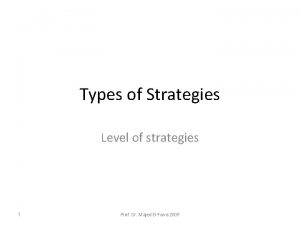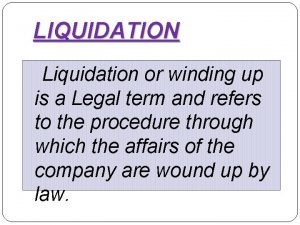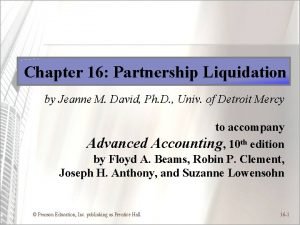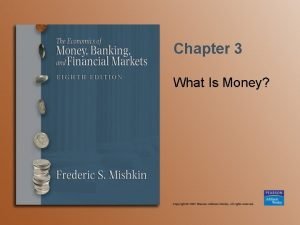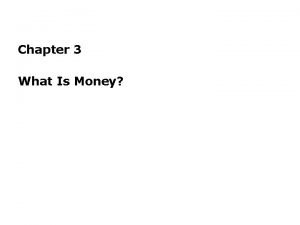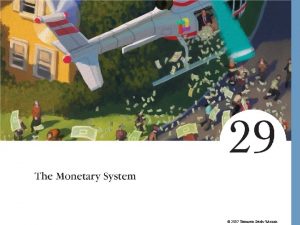Meaning of Money What is it Money or









- Slides: 9

Meaning of Money • What is it? • Money (or the “money supply”): anything that is generally accepted in payment for goods or services or in the repayment of debts. • A rather broad definition 3 -1 © 2013 Pearson Education, Inc. All rights reserved.

Meaning of Money (cont’d) • Money (a stock concept) is different from: • Wealth: the total collection of pieces of property that serve to store value • Income: flow of earnings per unit of time (a flow concept) 3 -2 © 2013 Pearson Education, Inc. All rights reserved.

Functions of Money • Medium of Exchange: – Eliminates the trouble of finding a double coincidence of needs (reduces transaction costs) – Promotes specialization • A medium of exchange must – be easily standardized – be widely accepted – be divisible – be easy to carry – not deteriorate quickly 3 -3 © 2013 Pearson Education, Inc. All rights reserved.

Functions of Money (cont’d) • Unit of Account: – used to measure value in the economy – reduces transaction costs • Store of Value: – used to save purchasing power over time. – other assets also serve this function – Money is the most liquid of all assets but loses value during inflation 3 -4 © 2013 Pearson Education, Inc. All rights reserved.

Evolution of the Payments System • Commodity Money: valuable, easily standardized and divisible commodities (e. g. precious metals, cigarettes). • Fiat Money: paper money decreed by governments as legal tender. 3 -5 © 2013 Pearson Education, Inc. All rights reserved.

Evolution of the Payments System (cont’d) • Checks: an instruction to your bank to transfer money from your account • Electronic Payment (e. g. online bill pay). • E-Money (electronic money): – Debit card – Stored-value card (smart card) – E-cash 3 -6 © 2013 Pearson Education, Inc. All rights reserved.

Measuring Money • How do we measure money? Which particular assets can be called “money”? • Construct monetary aggregates using the concept of liquidity: • M 1 (most liquid assets) = currency + traveler’s checks + demand deposits + other checkable deposits. 3 -7 © 2013 Pearson Education, Inc. All rights reserved.

Measuring Money (cont’d) • M 2 (adds to M 1 other assets that are not so liquid) = M 1 + small denomination time deposits + savings deposits and money market deposit accounts + money market mutual fund shares. 3 -8 © 2013 Pearson Education, Inc. All rights reserved.

M 1 vs. M 2 • Does it matter which measure of money is considered? • M 1 and M 2 can move in different directions in the short run (see figure). • Conclusion: the choice of monetary aggregate is important for policymakers. 3 -9 © 2013 Pearson Education, Inc. All rights reserved.






